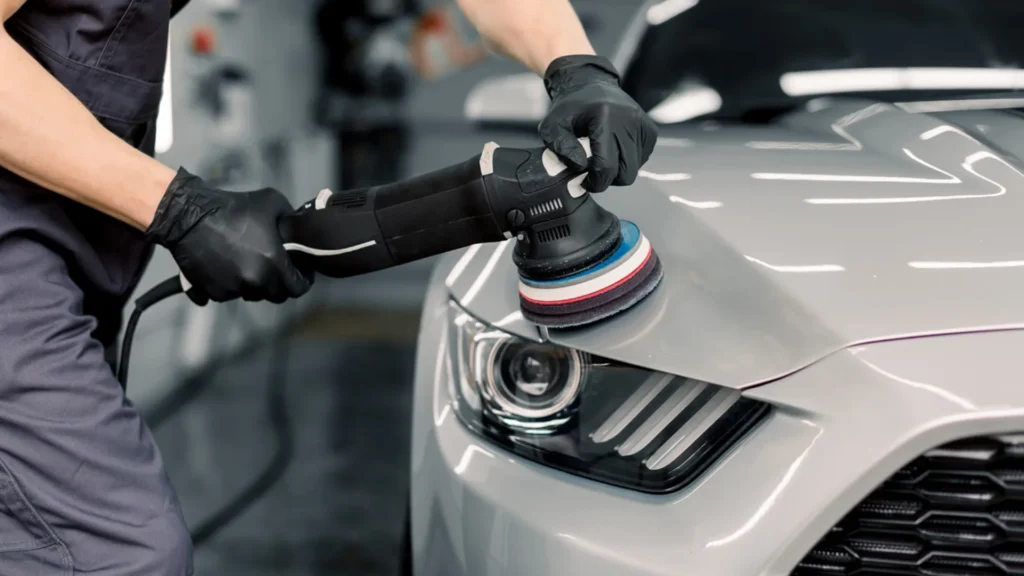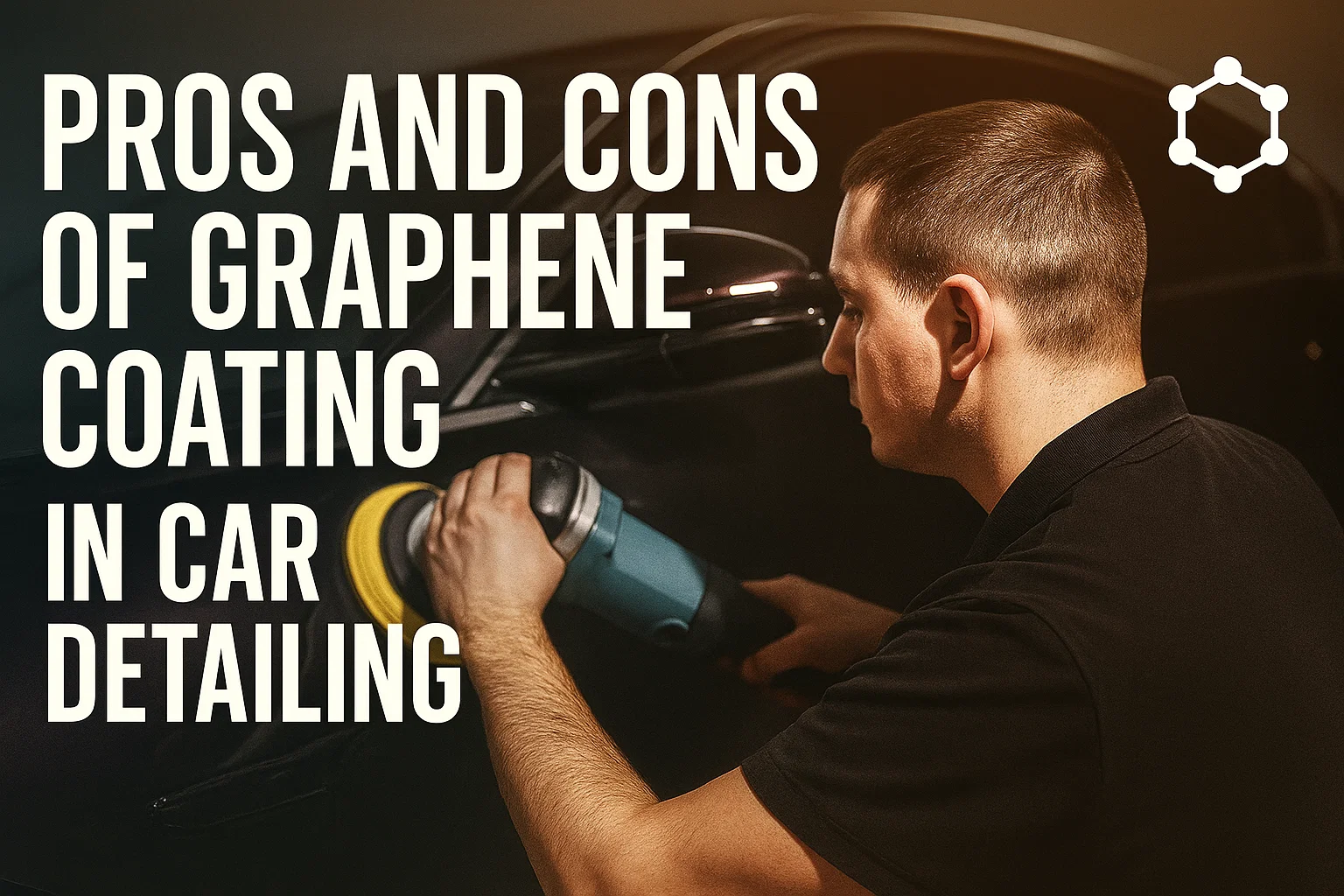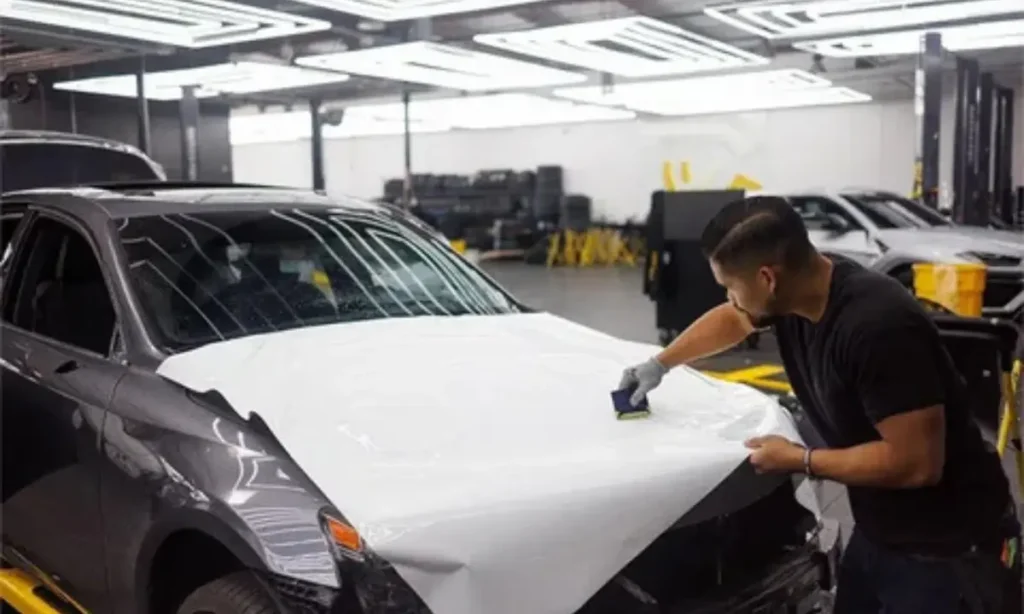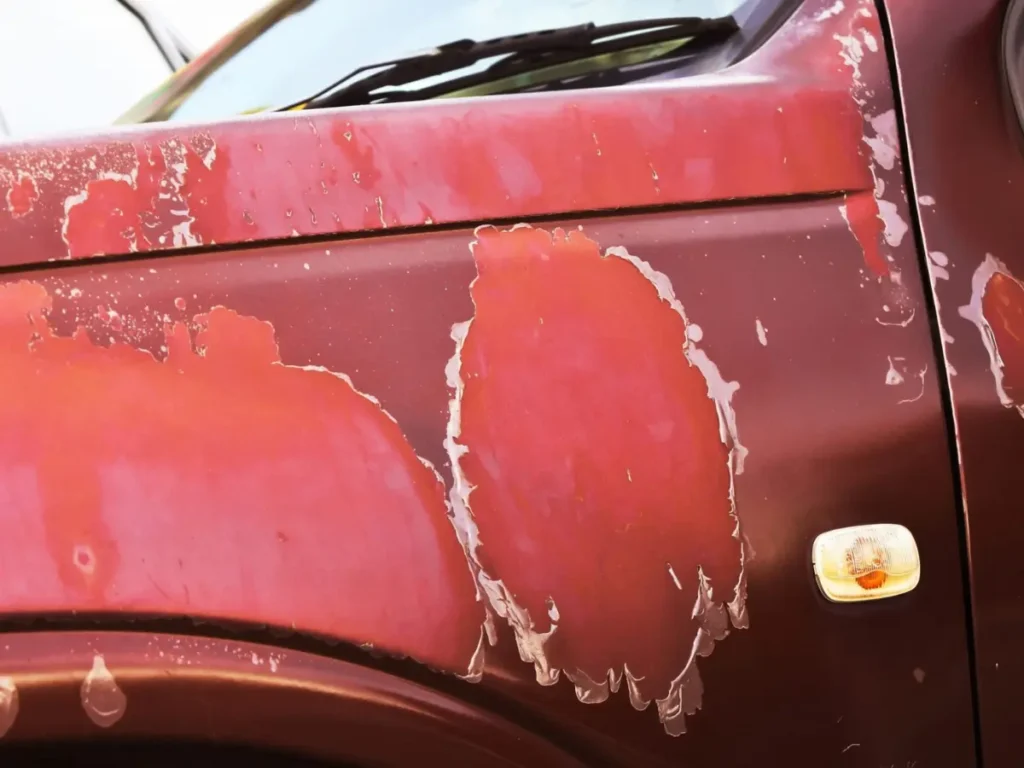If you love keeping your car looking sleek, shiny and well-protected, you have probably heard about graphene coating. It is one of the latest products in the car detailing market, which will secure a stronger protection, a deeper gloss, and a better durability compared to the usual ceramic coats. However, is it worth all the hype?
In this blog, you’ll know whether this advanced coating is the right choice for your vehicle or if you should stick with tried-and-true options like ceramic coatings.
What Is Graphene Coating in Car Detailing?
Graphene coating is one of the latest technologies based on the graphene material which is one of the strongest and thinnest ever discovered. It consists of a single layer of carbon atoms that is patterned in a hexagonal manner and which is why it is very strong and withstands heat, water, and chemicals.
On a car application, graphene coating serves as a protective cover, which connects to the surface of the paint. This coating is useful in avoiding the damage caused by UV rays, oxidation, bird droppings, water spots as well as dirt, besides providing a car with a glossy and intense finish.
Imagine it as a form of armor for your car’s paint only that it has a more sophisticated formula than conventional ceramic paint.
Why Graphene Coating Has Become So Popular
The concept of graphene coating has attracted a gigantic amount of attention in the auto detailing industry in recent years. These are the reasons why it is capturing the limelight:
- Superior durability: Most users report that the graphene coating is tougher than ceramic and can be used up to 5 years and even longer.
- Better hydrophobic properties: It is more effective at repelling water and dirt, which minimizes the washing.
- Improved heat resistance: It prevents water spotting and fading of paint in the hot climate.
- Smoother finish: The coating forms a mirror-like surface that makes the colors deep and shiny.
These benefits have rendered the graphene coating of vehicles very attractive to car lovers who desire the most protection and beauty.
Pros of Graphene Coating in Car Detailing
Let’s start with the benefits that contribute to the adaptation of graphene coating as one of the most promising innovations in vehicle care.
1. Exceptional Durability
Graphene layers are characterized by lasting performance. Graphene coatings can withstand 5 years or even longer with adequate maintenance unlike waxes or even certain ceramic coatings. Its powerful molecular bond prevents it from scratches, fading and general wear and tear.
2. Reduces Water Spots
The water spots are one of the issues associated with the ceramic coating since it is likely to retain heat. Graphene, however, is very good in terms of heat dissipation, i.e., it cools quicker and reduces the possibility of the formation of mineral deposits.
Graphene can come in handy especially in a region where there is hard water or heavy precipitation.

3. Unmatched Gloss and Depth
Graphene finishes give a rich, wet look on affixing the color and lustre of your car. The light reflectivity of the coating is smooth which means that your paint looks more showroom-quality finish.
4. Easier Cleaning and Maintenance
It is easy to clean as the surface is smooth, and it does not adhere to dirt, grime, or bird droppings. You will find that your car will be cleaner and when it requires washing, it will take a shorter time. This water repelling (hydrophobic) effect facilitates easy maintenance.
5. UV and Chemical Resistance
Graphene is very resistant to ultraviolet radiation as well as brutal chemicals. This will prevent oxidation, fading, and other damage to your paint from road salt or acidic contaminants.
6. Anti-Static Properties
Anti-static behavior is one of the rare benefits of graphene coating. Graphene also does not collect any type of dust like ceramic and thus, the car can be kept longer before it needs to be cleaned.
Cons of Graphene Coating in Car Detailing
There is no flawless product and graphene coating is not an exception. These are some of the disadvantages that you need to take into account before applying either to your car.
1. Higher Cost
Graphene coatings can be quite costly compared to ceramic coatings or waxes. It is also costly in terms of accuracy and time, which are necessary in the application process. This may not be the most cost-effective choice in case you have a very limited budget.
2. Professional Application Recommended
Despite the availability of DIY graphene coating kits, a professional detailer is often the best option in order to achieve the highest quality results. When coating is applied in the wrong way streaks may occur, the coverage may be uneven or the bonding with the paint may not be good.
3. Not a Magic Shield
Although graphene is a very strong material, it does not make your car invincible. Your paint can still be ruined by rocks, sharp things and deep scratches. It is a good shield but not bulletproof.
4. Requires Proper Maintenance
Although it is decreasing the washing frequency, you must take care of the coating through the use of proper cleaning methods and maintenance sprays to maintain the life of the coating.
5. Limited Long-Term Data
The number of long-term studies comparing graphene to ceramic coating is not as much because the use of graphene coating is rather new. At the early stage, the results are impressive, but a long time will be required to determine how much they will really last.
Tips for Getting the Most Out of Your Graphene Coating
Graphene coating is an excellent idea to invest in, and you must remember the following easy tips to make sure that the product is fully protected and shines:
- Prep your paint properly: Before applying any kind of coating to your car, it is important to wash, decontaminate, and polish the car first.
- Apply in a controlled environment: Do not use in dusty or damp places.
- Use maintenance sprays: Coating life and improving hydrophobic properties with graphene detail sprays.
- Avoid harsh chemicals: PH-balanced car shampoos will help to preserve the coating.
- Regular inspections: Monthly checkups to ensure there is no wear or dullness.
These measures will assist you in keeping that rich gloss and long-lasting finish for many years.
Graphene vs. Ceramic Coating: What’s the Difference?
Many people wonder whether graphene coating is better than ceramic coating. The truth is, both have their strengths.
Here’s a quick comparison:
| Feature | Graphene Coating | Ceramic Coating |
| Durability | Up to 5+ years | 2–5 years |
| Gloss Level | Deep, rich gloss | High gloss |
| Water Spot Resistance | Excellent | Moderate |
| Heat Resistance | Superior | Good |
| Static Resistance | Excellent | Low |
| Cost | Higher | Moderate |
| Ease of Application | Requires skill | Easier |
In short, graphene coating offers a few extra perks, but ceramic coatings are still a solid and reliable choice for many car owners.
Conclusion
The use of graphene coatings has gained instant popularity among people who like cars and there is a reason why. Its overall durability, waterproofness, and mirror-like gloss are a luxury product that can be used by anybody seeking to preserve and beautify his or her car. Nevertheless, it is not flawless more expensive price and professional application may become a minus to some.
To explore more about premium car detailing solutions, visit Izzy’s Auto Detailing today.
FAQs
In many ways, yes. Graphene coatings offer better water spot resistance, heat dissipation, and anti-static properties than ceramic coatings.
With proper care, graphene coating can last up to five years or more.
DIY kits exist, but professional application ensures even coverage and maximum protection.
It provides a strong protective layer but doesn’t make your car completely scratch-proof.
Depending on your vehicle size and service provider, it can cost between $800–$2,000 for a professional application.




